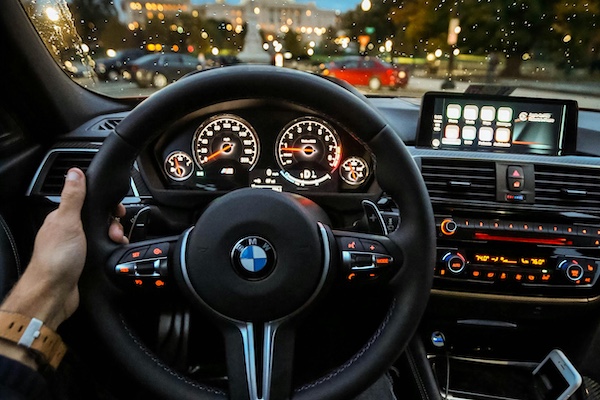Media post: Top 5 Driver Assisted Cars in 2025

The automotive industry continues to revolutionize how we experience driving through advanced driver assistance systems (ADAS). As we navigate through 2025, several vehicles stand out for their exceptional ability to enhance safety, reduce driver fatigue, and provide semi-autonomous driving capabilities. These cutting-edge systems represent the pinnacle of automotive technology, combining sensors, cameras, radar, and artificial intelligence to create a safer and more comfortable driving experience.
- General Motors Super Cruise System
Leading the pack in 2025 is General Motors’ Super Cruise technology, which has earned widespread recognition from automotive experts and safety organizations. Super Cruise, available on 20 Buick, Cadillac, Chevrolet, and GMC models, will work on about 750,000 miles of mapped roads in the U.S. and Canada by the end of the year. This hands-free driving system stands out for its comprehensive approach to driver monitoring and road mapping.
The Super Cruise system utilizes a sophisticated driver attention monitoring system that uses infrared technology to ensure the driver remains alert and ready to take control when necessary. Unlike some competitors, Super Cruise operates on pre-mapped highways and major roads, providing a more controlled and predictable environment for semi-autonomous driving. The system seamlessly handles lane changes, maintains safe following distances, and can navigate complex highway interchanges without driver intervention.
What sets Super Cruise apart is its conservative yet reliable approach to autonomous driving. The system doesn’t promise more than it can deliver, focusing instead on providing a thoroughly tested and dependable experience across GM’s extensive vehicle lineup. From the luxury-oriented Cadillac Escalade to the practical Chevrolet Tahoe, Super Cruise delivers consistent performance regardless of the vehicle platform.
- Mercedes-Benz Drive Pilot and Distronic Systems
Mercedes-Benz continues to push the boundaries of luxury and technology with their comprehensive suite of driver assistance features. Mercedes-Benz’s driver assistance technology ranked higher than Tesla’s on Consumer Reports’ evaluation list, demonstrating the German automaker’s commitment to safety and reliability over flashy marketing claims.
The Mercedes-Benz EQS, their flagship electric sedan, exemplifies the brand’s approach to driver assistance technology. The 2025 EQS comes packed with standard driver-assistance technology, including adaptive cruise control and self-parking assist. The Drive Pilot system, available on select models, represents one of the most advanced Level 3 autonomous driving systems currently available to consumers.
Mercedes-Benz’s approach emphasizes precision and safety, with multiple redundant systems ensuring reliable operation. The Distronic adaptive cruise control works in conjunction with lane-keeping assist and evasive steering assist to provide a comprehensive safety net. The system’s ability to handle stop-and-go traffic, automatically maintain safe following distances, and even execute emergency maneuvers when necessary makes it particularly valuable for daily commuting and long-distance travel.
- Ford BlueCruise Technology
Ford’s BlueCruise system has gained significant traction in the driver assistance market, earning praise from Consumer Reports reviews and rankings of active driving assistance systems, including Ford BlueCruise alongside General Motors Super Cruise and Tesla Autopilot. This hands-free driving technology is available across Ford’s lineup, from the F-150 Lightning electric truck to the Mustang Mach-E crossover.
BlueCruise operates on more than 130,000 miles of pre-qualified highways across the United States and Canada. The system uses a combination of cameras, radar sensors, and GPS mapping to provide lane centering, adaptive cruise control, and automatic lane changing capabilities. What makes BlueCruise particularly appealing is its integration across Ford’s diverse vehicle portfolio, ensuring that whether you’re driving a pickup truck or a family SUV, the experience remains consistent and reliable.
The system includes driver monitoring technology that ensures the person behind the wheel remains attentive and ready to take control when necessary. Ford’s approach balances capability with responsibility, providing genuine hands-free driving while maintaining appropriate safety protocols. For drivers who frequently travel on highways, BlueCruise can significantly reduce fatigue and stress during long journeys.
- BMW Driving Assistant Professional
BMW‘s Driving Assistant Professional represents the Bavarian automaker’s sophisticated approach to semi-autonomous driving technology. The BMW i7 features the most recent version of Driving Assistant Plus, with hands-free features now working up to 70 miles per hour, a significant improvement over the prior version which only allowed it up to 40 mph. This enhancement makes the system much more practical for highway driving and long-distance travel.
The BMW system combines multiple technologies including Active Cruise Control with Stop & Go, Steering and Lane Control Assistant, and Extended Traffic Jam Assistant. These features work together to provide a comprehensive driving assistance package that can handle various driving scenarios, from congested city traffic to open highway cruising.
BMW’s emphasis on the “Ultimate Driving Machine” philosophy means their driver assistance systems are designed to enhance rather than replace the driving experience. The technology provides support when needed while still allowing enthusiastic drivers to enjoy the engaging characteristics that BMW vehicles are known for. This balance makes BMW’s system particularly appealing to drivers who want advanced safety features without completely removing themselves from the driving experience.
- Tesla Autopilot and Full Self-Driving
Despite facing increased competition, Tesla’s Autopilot system remains one of the most recognizable names in driver assistance technology. While Tesla’s driver assistance technology ranked eighth on Consumer Reports’ list, behind systems from Ford, General Motors, Mercedes-Benz, BMW and others, the company continues to push the envelope with regular over-the-air updates and expanding capabilities.
Tesla’s approach differs significantly from traditional automakers, relying primarily on camera-based vision systems rather than the combination of sensors, radar, and cameras used by competitors. The Full Self-Driving package, available as an option on all Tesla models, promises advanced capabilities including Navigate on Autopilot, Auto Lane Change, and Summon features.
What sets Tesla apart is the continuous improvement through software updates and the extensive real-world data collection from their fleet of vehicles. Tesla owners regularly receive new features and improvements to existing ones through over-the-air updates, making their vehicles more capable over time. However, it’s important to note that despite the “Full Self-Driving” name, the system still requires active driver supervision and is classified as a Level 2 driver assistance system.
The Importance of Driver Responsibility
While these advanced driver assistance systems offer remarkable capabilities, it’s crucial to remember that they are designed to assist, not replace, human drivers. Even the most sophisticated systems can encounter situations they cannot handle, which is why maintaining awareness and being ready to take control remains essential. As these technologies continue to evolve, accidents can still occur, and in such cases, consulting with professionals like A Stein Law Florida car accident lawyer can help navigate the complex legal landscape surrounding advanced driver assistance systems and their role in automotive incidents.
Looking Ahead
The driver assistance technology landscape in 2025 represents a significant step forward in automotive safety and convenience. Each of these top five systems offers unique strengths and approaches to semi-autonomous driving, from General Motors’ conservative reliability to Tesla’s aggressive innovation. As these technologies continue to mature and improve, they promise to make our roads safer and our driving experiences more comfortable and efficient.
The key for consumers is understanding that these systems work best when drivers remain engaged and ready to take control when necessary. While the future of fully autonomous vehicles may still be on the horizon, today’s advanced driver assistance systems provide a glimpse into that future while delivering tangible benefits in terms of safety, convenience, and driving enjoyment.
As we move forward, the continued development and refinement of these systems will likely blur the lines between driver assistance and true autonomous driving. For now, these five systems represent the best that current technology has to offer, providing drivers with unprecedented levels of assistance while maintaining the fundamental responsibility that comes with operating a motor vehicle.



